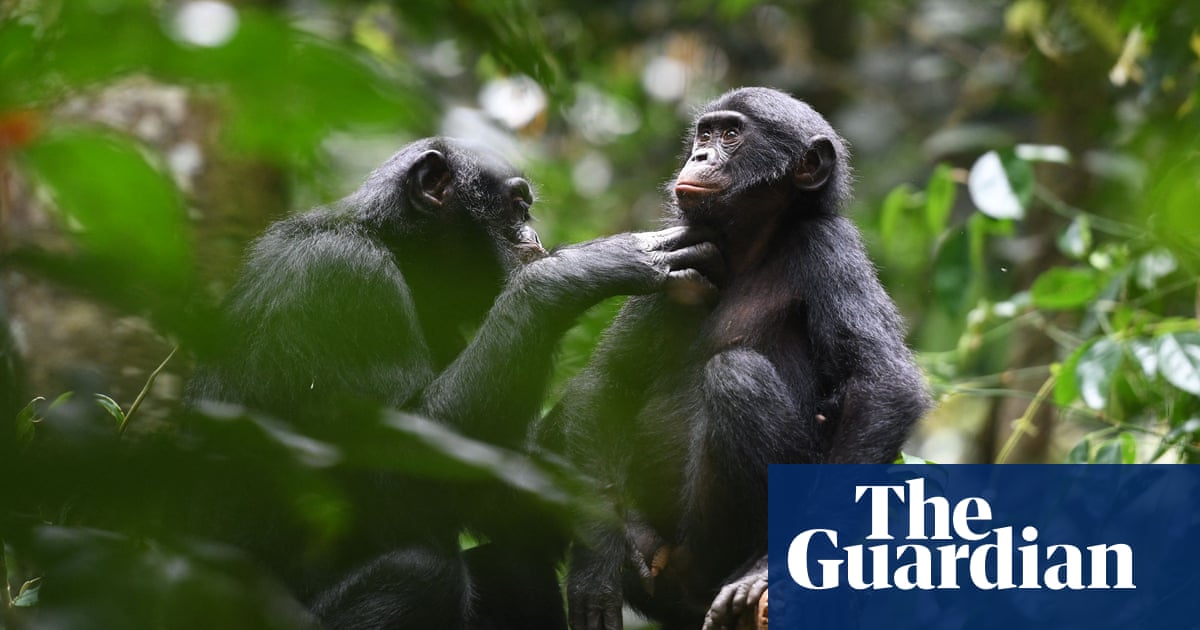Bonobos are not quite the peace-loving primates they have long been considered, researchers say, after finding that males show more aggression towards each other than chimpanzees.
Bonobos and chimpanzees are humans’ closing living relatives. While chimpanzees are known to show aggression against each other – sometimes to the point of death – bonobos have long been thought to live more harmoniously, with no known killings. The difference has led to the theory that natural selection works against aggression in male bonobos.
Now research has turned the idea on its head, revealing that bonobos show higher rates of male-on-male aggression than chimpanzees – even when researchers looked specifically at cases where the males came to blows.
“It’s a species with such complex behaviour that just limiting the species to being a hippy, for this study it’s not going to work. It’s just too simplistic,” said Dr Maud Mouginot of Boston University, who is first author of the research.
“I think what we know now is that bonobos and chimpanzees use aggression and they use it in different ways. And they have different strategies around it,” she said, adding that an interesting area to explore now was why and when these different strategies evolved.
Writing in the journal Current Biology, Mouginot and colleagues describe how they followed 12 male bonobos across three communities at the Kokolopori Bonobo Reserve in the Democratic Republic of the Congo, and 14 male chimpanzees across two communities at Gombe national park in Tanzania.
Each male was individually followed by the researchers during its waking hours, during which its interactions with other members of its species were recorded, including aggressive physical contact, and other aggressive actions such as charging and chasing.
Overall, the team recorded 521 aggressive interactions involving tracked bonobos over 2,047 hours, and 654 aggressive interactions among the identified chimpanzees over 7,309 hours.
The team say that despite previous studies finding chimpanzees show more severe aggression – such as killings, infanticide and sexual coercion – the results reveal aggressive acts between males were 2.8 times more frequent in bonobos than in chimpanzees, with acts involving physical contact specifically found to be 3.0 times more frequent.
For both species, more aggressive males had greater success in mating with females.
Yet, while not quite the model of gentlemanly chivalry, male bonobos treated females differently to chimpanzees: the team found male-on-female aggression was less common, and female-on-male aggression more common, in the former than the latter – something the team put down to female bonobos often outranking males in the social group.
“We know from the literature that, for example, male and female [bonobos] form a close association … and we do not observe that in chimpanzees,” said Mouginot, noting that humans, too, form such associations.
The researchers add that while only 1% of aggressive acts among male bonobos involved the primates teaming up, the figure was 13% in chimpanzees – a finding that may explain the lower frequency of aggression in chimpanzees.
“It’s just more risky because of course if you have several individuals against you, you might be completely beat up,” Mouginot said.

Dr. Thomas Hughes is a UK-based scientist and science communicator who makes complex topics accessible to readers. His articles explore breakthroughs in various scientific disciplines, from space exploration to cutting-edge research.








